Review: Samyang ( Rokinon ) 85mm f:1.4 – O surpriza placuta – ( a very nice surprise )
Buna ziua natiune,
A venit vremea pentru un review nou, de data asta la un obiectiv care e menit sa faca putin valva intr-un segment de piata deja acaparat de producatorii autohtoni, dar si de Sigma care are un obiectiv destul de competitiv aici, sau alte modele manual focus de la producatori cu mare renume cum ar fi Carl Zeiss. E vorba de segmentul obiectivelor prime “short tele” luminoase, in cazul nostru Samyang 85mm f:1.4
Ce il face pe Samyang deosebit in randul “baietilor mari” e in primul rand pretul – la momentul review-ului – pretul de referinta de la BH este de $299 pentru varianta fara chip si $329 pentru varianta cu chip ( AE ).
Obiectivul se gaseste sub diferite branduri in lume : Samyang, Vivitar, Rokinon, Polar etc dar este de fapt unul si acelasi obiectiv. Initial, in 2008 cand a aparut, a fost sub forma versiunii fara chip ( cea pe care o am si eu ) dar ulterior, a fost introdusa versiunea AE cu contacte si chip electronic pentru a facilita comunicarea cu camera. Teoretic, versiunea cu chip aduce mai multe pentru utilizatorii Canon decat pentru Nikon. La canon acest chip vine cu confirmarea focusului in body-urile Canon – lucru FOARTE important la un obiectiv manual focus atat de luminos unde profunzimea de camp la 1.4 este extrem de mica. Pe Nikon insa, versiunea AE se “lauda” ca aduce confirmarea focusului, care oricum exista pe orice DSLR Nikon. Ca o paranteza, orice DSLR Nikon va confirma focusul cu orice obiectiv montat, fie ca este un obiectiv cu chip, sau fara. De asemenea pana in 2010 aparatele Nikon semiprofesionale si cele profesionale ( D200, D300(s), D2(h,x,s) D3(x,s), D700 etc ) aveau si masurare automata cu orice obiectiv care nu era dotat cu chip electronic. Trebuia doar sa inregistrezi in meniu obiectivul folosit ( in cazul nostru 85 f1.4 ) si aparatul facea restul, inclusiv inregistrarea in EXIF a tuturor setarilor folosite ( inclusiv a diafragmei manuale ). Dupa 2010, Nikon a decis sa adauge optiunile acestea si pe modelul D7000 care e mai degraba un model de entuziasti decat unul semiprofi. Deci pe Nikon versiunea AE de la Samyang aduce aceste lucruri doar pentru corpurile low-entry si mid-level ( D40, D50, D60, D70, D80, D3*00, D5*00, D90 ) – toate celelalte avandu-le deja din aparat. Bila alba NIKON care imi permite sa folosesc obiective legendare cum ar fi Nikon 105mm f:2.5 AIS ( sau obiective vechi de 40-50 ani ) si pe corpuri DSLR. Repet, eu am versiunea fara chip – si o folosesc pe Nikon D3 deci nu mi-ar fi adus nici un avantaj concret versiunea AE.
PARERE GENERALA
Ok destula vorbaraie despre istorie si compatibilitate. Sa vorbim despre micul “animal”. Primele impresii: cutia este dintr-un carton cam subtirel – nu ca m-ar deranja. In interior obiectivul este separat de parasolar, si vine asezat intr-o “cochilie” de plastic foarte subtire si elastic, care protejeaza la posibilele loviri ale cutiei la transport. Nu pot spune ca e cel mai bine impachetat obiectiv, cele de la nikon avand o cutie mai groasa care probabil ar rezista la mai multe accidente. In cutie se gaseste intr-o punga obiectivul cu capacele puse, parasolarul, un saculet de plus de transport, manuale si alte hartii.
Primul contact cu obiectivul in sine iti lasa un sentiment de solid, greu, de “bine facut”. Obiectivul se simte extraordinar, calitatea constructiei este una de top. Corpul e facut din metal si unele parti de plastic – si e perfect comparabil cu orice obiectiv Nikon din clasa profesionala. Sticla frontala e destul de impresionanta si impunatoare insa lucrul care este destul de surprinzator e ca obiectivul cu totul e relativ mai mic decat ma asteptam, diamterul filtrului frontal fiind de 72mm. Un aspect negativ il reprezinta designul capacului frontal – si anume clemele de deschidere sunt in margini – asemanator celor de la Sigma facand destul de greu accesul la capac daca e montat parasolarul. O alta bila neagra, parasolarul, sau de fapt e o problema a capacului, nu stiu exact dar in momentul in care e montat capacul, e practic imposibil sa poti monta parasolarul – exista impresia ca parasolarul are cercul interior mai mic decat capacul de fata si deci nu prea are loc, deci trebuie intai sa dai capaul jos sa il montezi. Parasolarul sta destul de bine montat, nu exista probleme sau riscuri sa se desfaca aiurea. Intentionez oricum sa cumpar un capac original Nikon 72mm sa pot avea acces la capac si cu parasolarul pus si sper ca si problema cu montatul parasolarului sa se rezolve.
**************************************************************
ENGLISH
Hello – this time I will try and do a review of a nice alternative to a “short” fast telephoto prime lens. We’re talking about Samyang 85mm f:1.4 – also branded Rokinon, Vivitar, Polar etc in other countries. It was launced in 2008 and there are now 2 versions out there : one without an electronic chip, and one AE versiun ( with a chip ). I currently own the non-chip version and I am using it on a Nikon D3. Using any Nikon with this lens, or any other manual lenses with Nikon F mount, you WILL HAVE focus confirmation, unlike the Canon users that NEED the AE version to have their focus confirmed. The only thing the AE version brings to Nikon users is metering on low-end cameras. Any semi-professional Nikon camera such as the D200, D300, D700 or professional cameras D2, D3, D4 and now the enthusiast D7000 WILL meter with any Nikon F-mount lens, including the non-AE Samyang we’re talking about here.
GENERAL LOOK
As a general view, the lens comes boxed in a pretty thin box, but the feeling of the actual lens is pretty impressive. The lens feels strong, heavy and WELL BUILD. Build quality wise, it can be put next to any Nikon professional prime lens. Although it feels very strong, the lens it’s quite smaller than expected, the filter size is 72mm. On a negative side, we have the lens cap, which has a design similar to the Sigma ones, so access to it when the hood is mounted is very difficult. Also when the lens cap is mounted, it’s practically impossible to mount the hood, as it feels like the lens cap is somewhat bigger than the inside diameter of the lens hood. I will exchange the lens cap with a genuine 72mm Nikon cap for easier access and hopefully this issue will also be resolved.
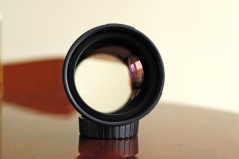
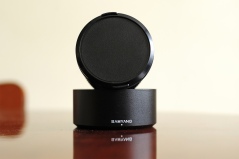
*****************************************************************************
IMAGINI DE TEST
Imediat dupa ce l-am desfacut din cutie, am fost bineinteles curios de cum se comporta din punct de vedere optic. Am inceput un mic test la diafragme deschise ( 1.4 – 5.6 ) si reuzultatele au fost destul de surpinzatoare. Spun surprinzatoare deoarece conform informatiilor care le aveam de pe site-urile de teste internationale ( photozone, lens tip ) – acest Samyang 85mm ar fi trebuit sa fie destul de soft wide-open ( 1.4 – 2.8 ) dar cel putin din ce vad eu in sample-urile urmatoare – acest lucru nu e valabil. Probabil ei au avut un sample mai prost, dar cam toti cei care au facut review-uri la acest model au confirmat performantele incredibil de bune. Poate marii producatori ( Nikon si Canon ) au facut “presiuni” astfel ca acest obiectiv FOARTE ieftin sa nu para atat de bun pe cat e de fapt 🙂 – Pentru un rezultat cat mai corect, am folosit focusul prin live-view cu aparatul montat pe trepied. Dupa cele 5 poze de test de pe trepied, aveti si alte fotografii “de teren” trase cu micul monstru. Cel putin parerea mea e ca pozele arata impresionant. Bineinteles CLICK pentru a vedea pozele la 100%.
*************************************************
TEST SAMPLES
As soon as took it out of the box I decided to have a small test with the lens on the wide-open apertures ( 1.4 – 5.6 ). The following photos were taken with a Nikon D3, mounted on a tripod and the focus was done via live-view for a precise result. The images were a bit surprising because after reading about this lens on some testing websites ( photozone, lens tip ) – I expected the lens to be quite soft wide opened ( 1.4 – 2.8 ) – but it seems this is not the case. Maybe they had a bad sample although it’s a bit coincidental, and also other members confirmed that the lens really performs very good. Maybe the big guys ( Nikon and Canon ) made some “pressure” so that this cheap gem does not seem as good as it actually is 🙂 After the 5 test samples you can also look at some “field” photos taken with the little monster. I find the results to be VERY impressive. Of course you need to click on the thumbs to see the 100% samples.
———————————————————————————————-
TESTE COMPARATIVE / COMPARATIVE TESTS
Partea 1 ( Part 1 )
Prima sesiune de teste s-a desfasurat la 2-3 zile dupa ce l-am luat si a avut loc intr-un magazin oficial Nikon unde am avut acces si la alte obiective cu care sa compar mica bestie. Testul a avut loc in aceasta zi intre Samyang si Nikon-urile 1.8G si 1.4D intai in centru si apoi doar contra 1.4D in margini ( a urmat in alta zi un test mai amanuntit cu 1.8G si 1.4G ). Merita mentionat ca Nikonul 1.4D prezinta o nuanta mai oldish, cu o tenta de galben, nu neaparat ca e un lucru rau insa merita spus.
*******************************************************************
First testing session took place 2-3 days after getting the Samyang, in a local Nikon store where I had access to the 2 contestants that day : the new Nikon 1.8G and the older Nikon AF 85mm 1.4D. Worth mentioning is that the 1.4D general color cast feels a bit “filmish” , more yellow than the other two, not that it’s a bad thing necessary.
CENTRU f 1.4 – Samyang / Nikon 1.4D


In primul rand aici se observa o diferenta intre cele doua, avantajul fiind de partea Nikonului. Totusi tind sa cred ca focusul meu nu a fost chiar precis sau s-a miscat nitel aparatul dupa focus pentru ca imaginea din marginea cadrului trasa cu Samyang e mai buna decat cea din centru deci cred cam gresit eu nitel focusul.
Din punct de vedere al contrastului, Nikonul e mai bun fara indoiala. Bokehul este superb la ambele obiective, un pic diferite datorita diferentei aparente de “focala reala” astfel ca Nikonul pare mai “scurt” si Samyangul mai “lung”, oricum diferentele sunt minime si pot pune mana pe una din poza sa spun ca e mai buna ca cealalta – o performanta foarte buna din partea ambilor concurenti. La aberatii cromatice insa ambele obiective prezinta probleme, cel mai evident e pe muchiile cutiei de la filtru astfel ca Nikonul prezinta o tenta movalie iar Samyangul o tenta verde. La fel se simte si o mica tenta galbuie/verde in cerculetele din zona out-of-focus dar nu sunt probleme majore la nici unul.
************************************************************
First off I must say that there is a difference between the 2, but most likely because of a small error of mine when focusing the Samyang ( or maybe I moved the camera a bit ) – because in the later border test the result with the Samyang is sharper than this center result – also this problem is not visible in the second day testing along side the 1.4G so it must be my error.
However, contrast wise Nikon wins, no doubt there. The bokeh is absolutely superb on both lenses, however there is a small difference in “real” focal length as the Nikon seems a bit shorter than the Samyang due to the rather close focusing distance of the subject probably but I can’t pick a winner here. CAs wise we have some issues from both lenses, visible on the edges of the filter box mostly , the Nikon shows a purple fringing line, and the Samyang shows a rather greenish hue. In the out of focus spherical circles you can spot a greenish/yellow edge casting on both lenses, but we’re in 1.4 setting here and the problems are not that big anyway.
CENTRU f2.0 – Samyang / Nikon 1.8G / Nikon 1.4D
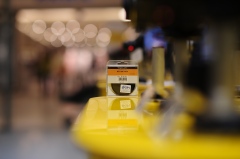
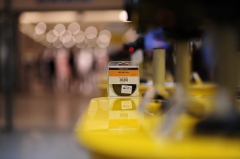
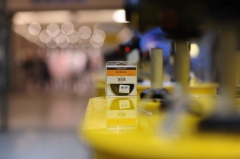
La f:2.0 avem un nou concurent – Nikon AF-s 85mm 1.8G ( in mijloc ) – de mentionat e ca Samyangul nu are o pozitie de 1.8 astfel ca un test in 1.8 cu toate 3 nu a fost posibil.
Aici situatia devine interesanta. In ceea ce priveste rezolutia, cei doi baieti mari ( 1.4 ) il surclaseaza nitel pe noul venit dar nu cu mult. Diferentele intre Samyang si 1.4D sunt absolut minime – as putea sa spun aproape invizbila diferenta parca un pic in favoarea coreeanului. Exceptand diferenta de nuanta a obiectivelor, la capitolul contrast nu sta nici unul rau, ba chiar rezulutatele sunt impresionante pentru 1.8G care in 2.0 e practic deschis maxim. La bokeh situatia se prezinta foarte bine, singurele diferente notabile sunt ca la 1.8G spre margine incep sa se simta “ochii de pisica” in zonele de lumina si la celelalte doua incep sa se simta lamelele diafragmelor avand in vedere ca in cazul lor suntem deja “inchisi” cu 1 stop. Oricum rezultate excelente per total pentru toate cele 3 obiective.
*********************************************************
At 2.0 we have a new contendent – the new Nikon AF-s 85mm 1.8G – also worth mentioning is that because the Samyang is a full manual lens, we can’t test it at 1.8 as there is no such value on the aperture ring.
Here the things get interesting. Resolution wise, the big boys ( the two 1.4s ) beat the new kid ( 1.8G ) but not by much. Between the 1.4 lenses, differences are absolutely minimal, if I were to pick one I would probably pick the Samyang but it’s really TOO CLOSE TO TELL. Contrast wise everything looks VERY GOOD, congrats on the great performance of the 1.8G which is practically wide opened at 2.0. Bokeh wise, everything is nice, only a few things should be noted: on the 1.8G photo we can see some “cat’s eye” circular shapes towards the edges ( the other 2 maintain a nice round feeling ) – also on the 1.4 lenses we can start seeing the edges of the aperture blades a bit since we’re already 1 Stop closed here.
CENTRU f2.8 – Samyang / Nikon 1.8G / Nikon 1.4D
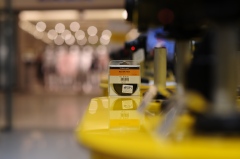
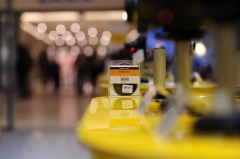
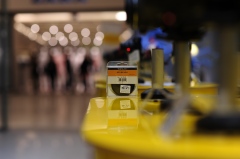
Deja la 2.8 nu prea mai exista nici o diferenta notabila intre cei 3 in ceea ce priveste rezolutia. La contrast la fel lucrurile sunt aproape identice. Aberatii cromatice nu exista decat in zonele sferice de lumina, un lucru relativ “normal” avand in vedere ca luminile respective erau niste spoturi foarte puternice de la magazinul de vis-a-vis. I ceea ce priveste bokeh-ul lucrurile sunt interesante: daca privim cu atentie muchiile de la intrarea magazinului de vis-a-vis as putea spune ca Samyangul e cel mai “cremos” , dar “ceruletele” incep sa arate din ce in ce mai proeminent marginile lamelelor de la diafragma. Se simte cum Nikonurile avand lamelele rotunjite ofera cerculete mai bune dar per total nitel imaginea pare un strop mai aglomerata. Aici cred ca e o chestie de gust pana la urma …
******************************************************
At 2.8 – there isn’t anything that can be said about differences about the 3 contestants. Same thing with the contrast. CAs are gone, except for the “light circles”, somewhat an expected thing considering that those come from some very bright spot lights from the store across the hallway. Bokeh wise, I could say the things a bit interesting. On one hand if you look at the edges of the store’s wall, the Samyang delivers the “creamiest” result here, but when it comes to the light sources circles, it shows the aperture blades more proemiment thant the Nikons with their rounded blades. It all comes to a matter of taste I think.
CENTRU f4.0 – Samyang / Nikon 1.8G / Nikon 1.4D
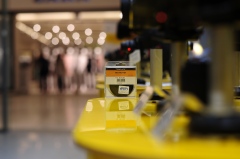
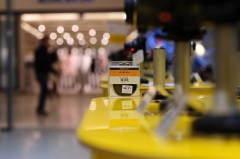
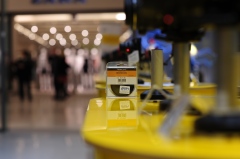
La f4.0 situatia se prezinta relativ identic ca la 2.8 intre cei trei – singura diferenta e ca si 1.8G-ul incepe sa isi arate lamelele in cercurile de la sursele de lumina destul de vizibil. Samyangul ramane cam cel mai cremos per total dar 1.4D continua sa aiba cele mai bune “cerculete”.
************************************************
At f4.0 when it comes to differences between the 3, everything is pretty much the same as with the 2.8 setting – the only thing different is that the new 1.8G shows it’s blade edges more obvious now, the 1.4D remains the clear winner when it comes to light source circles but the Samyang continues to feel the “creamiest” when it comes to edges softening.
MARGINI f:1.4 – BORDERS f:1.4 – Samyang / Nikon 1.4D
Testele de margine au fost facute doar intre Samyang si Nikon 1.4D, Nikonul 1.8G fiind indisponibil pentru moment, dar teste cu el in margini puteti vedea in partea a doua a testarii, cand il vom pune impotriva lui 1.4G.
***********************************************
The border tests were conducted only between the Samyang and the 1.4D, because the 1.8G lens was unavailable for that time ( someone was testing it ). However in part 2 of the test you can see tests with the 1.8G against the Samyang and the flagship 1.4G – so keep reading.
Aici deja rezultatele sunt foarte impresionante, mai ales din partea Samyangului care a doborat orice asteptari. Atentie vorbim de performanta spre margini in 1.4 !!
Diferentele intre cele doua obiective sunt practic inexistente, lasand la o parte un pic castul mai “gabicios al Nikonului. Din acest motiv am considerat ca la testarea in centru am gresit nitel focusul la Samyang la testul central in 1.4 pentru ca in margini rezultatul este suprinzator.
*********************************************
Here the results are impressive, especially for the cheap Samyang. Please note we are talking about border performance at 1.4 !!
Differences are almost invisible between the 2, on all levels, ignoring the yellowish cast on the Nikon photo. This is why I considered that the focus was a tiny bit off on the 1.4 center photo with the Samyang – the results here are stunning.
MARGINI f:2.0 – BORDERS f:2.0 – Samyang / Nikon 1.4D
Lucrurile se mentin superbe si la 2.0 cu o mica diferenta in favoarea Samyanului in ceea ce priveste rezolutia – se observa unde scrie “Video Filter” sub MARUMI – dar diferentele sunt aproape insesizabile. La bokeh, cum era de asteptat, Samyangul incepe sa-si arate marginile lamelelor la diafragme in zonele de cerculete luminoase – dar oricum un bokeh superb la amandoua.
********************************************
Things continue to look superb at 2.0 – with a slight advantage in favor of the Samyang resolution wise – please note the “Video Filter” text right under the MARUMI brand – but differences are almost invisible. Bokeh wise, as expected, the Samyang is starting to show it’s blade edges in the light circles area but both lens still offer a stunning bokeh.
MARGINI f:2.8 – BORDERS f:2.8 – Samyang / Nikon 1.4D
Acelasi lucru se poate spune si la 2.8 dar si la 4 – deci nu e nevoie sa intram in detalii.
*********************************************
Same things can be said at f:2.8 and f:4 – so it’s not necessary to go into details.
Partea 2 ( Part 2 )
Asa cum am promis – revin si cu al doilea set de teste comparative din ciclul “Samyang vs Restu’ Lumii” 🙂 – de data asta impreuna cu Nikon AFs 85mm f:1.4G si Nikon AFs 85mm f:1.8G ( din nou ).
*******************************************************************************
As promised – I am now back with the second set of comparative tests from the book “Samyang vs Rest of the World” – this time along the Nikon 1.4G and Nikon AFs 85mm f:1.8G ( again ).
CENTRU 1.4 – CENTER 1.4 – ordine ( order ) – Nikon 85 1.4G / Samyang 85 1.4
Cum era relativ de asteptat, se poate observa o diferenta intre cele doua obiective, Nikonul avand o rezolutie putin mai buna si de asemenea contrastul un pic mai bun. La Bokeh, eu nu prea vad nici un fel de diferenta, exceptand probabil micile “scame” din cerculetele Nikonului care sincer habar n-am ce cauza ar putea avea.
******************************************************************************
As expected, there is a small diference between the two – the Nikon shows a slightly better resolution ( sharpness ) and a slightly better contrast. Bokeh wise I simply don’t see any differences – except maybe for the small “dots” inside the light circles from Nikon’s photo, which I don’t find any explination for.
CENTRU 1.8 ( 2.0 ) – ordine ( order ) Nikon 85 1.4G / Nikon 85 1.8G / Samyang 85 1.4
In primul rand cum am mai zis, Samyang nu are o valoare 1.8 folosibila si astfel a trebuit sa folosesc 2.0. Legat de rezultate – aici avem o surpriza destul de mare si anume : Samyangul are cel mai bun rezultat , urmat de Nikon 1.4G care surprinzator arata notabil mai soft – culmea e ca arata mai prost ca la 1.4 lucru care ma face sa cred ca a gresit focusul. Totusi am repetat experimentul si rezultatul a fost identic. Fie obiectivul a fost un sample prost, lucru relativ rusinos la un asemenea nivel sau pur si simplu nu i-a placut valoarea diafragmei de 1.8 – lucru curios. Cert e ca Samyangu la rezolutie a cam batut cele 2 Nikonuri. La bokeh, Samyang incepe sa-si arate nitel lamele drepte de la diafragma – celelalte doua mentinand un aspect rotunjit la cerculete, dar privind imaginea de ansamblu – atat backgroundul cat si foregroundul par mai nervoase o idee la 1.8G – celelalte 1.4-uri fiind mai “cremoase” – din nou avem o problema de gusturi. 1.8G-ul la aceasta setare prezinta destul de multe aberatii cromatice.
*************************************************************
First off, as said before, since the Samyang is using the mechanical ring to set the aperture, we don’t have a 1.8 setting so 2.0 had to be used. Resolution wise – here we get the biggest surprise : Samyang is the best out of the 3, followed by the 1.4G – which surprisingly looks pretty soft. It almost looks softer than used wide open, which made me think it missed the focus so I repeated the shot but the result was the same. Either this lens was a bad sample, which is rather disappointing at this level and price tag, or this lens didn’t like the 1.8 setting which again is pretty curious. Bokeh wise, when considering the light sources manipulation, the 2 Nikkons have the more rounded circles, while the Samyang is starting to show it’s straight aperture blades. However, when looking at the whole picture ( full screen ) – we notice the 1.8G is having a bit of more nervous background and foreground when compared to the other two 1.4s. So a winner could be the 1.4G that has both a creamy aspect and the rounded light circles. At this setting, also noticeable is that the 1.8G is showing some bad CAs.
CENTRU 2.8 – CENTER 2.8 – ordine ( order ) Nikon 85 1.4G / Nikon 85 1.8G / Samyang 85 1.4
Cam aceiasi situatie si la 2.8 ca la 1.8 – singurul lucru de notat este ca Samyangu are o imagine usor supra expusa cu toate ca s-au folosit exact aceleasi setari.
***********************************************************
Same thing here as with the 1.8 test – the only thing worth mentioning is that the Samyang is somewhat overexposing this shot although the same settings were used.
CENTRU 4.0 – CENTER 4.0 – ordine ( order ) Nikon 85 1.4G / Nikon 85 1.8G / Samyang 85 1.4
Situatia la f4 se mai schimba – 1.4G-ul aratand cel mai bine aici – in continuare Samyang continua sa supraexpuna si automat sa piarda contrast din cauza asta ( nu e neaparat o problema optica ).
************************************************************
At f4 the order swaps again, with the 1.4G delivering the best result – however the Samyang continues to over-expose a bit and loose contrast cause of it – not necessary an optical problem, I’m sure that if I would have exposed 0.3 less, the result would have been different but I wanted to maintain the same conditions.
CENTRU 5.6 – CENTER 5.6 – ordine ( order ) Nikon 85 1.4G / Nikon 85 1.8G / Samyang 85 1.4
At 5.6 – all 3 lenses performed respectably close – with a slighter softer image on the 1.4G – most likely a missed focus.
Here is a link with more shots I took with this lens on my Nikon D3 body most of which are at f:1.4 – https://plus.google.com/photos/103164952044402035615/albums/5788482721974655985?banner=pwa

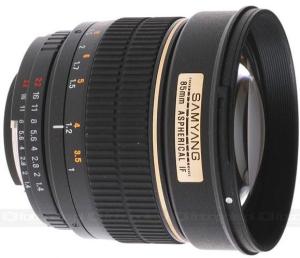
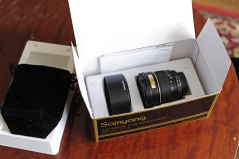
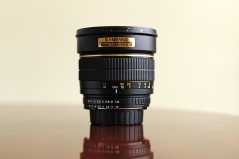










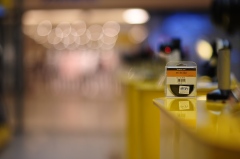
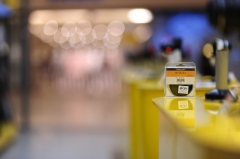
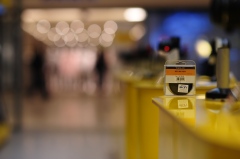
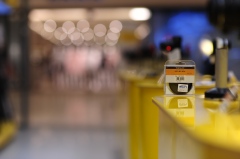
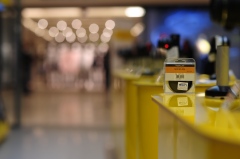
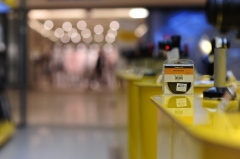
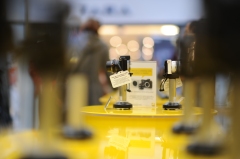
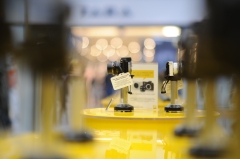
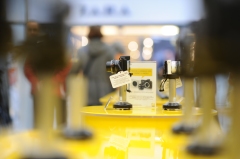
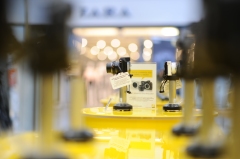
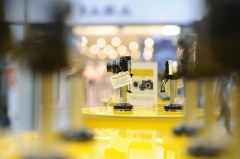
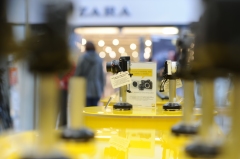
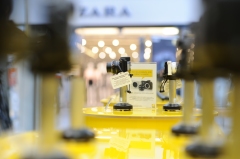
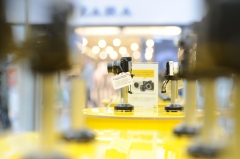
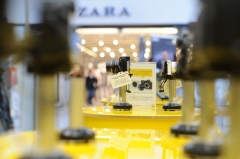
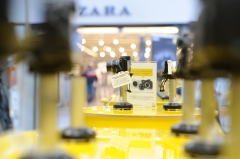

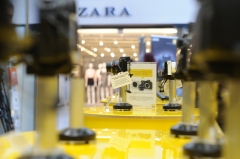
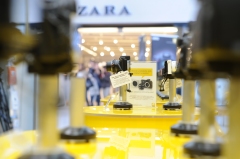
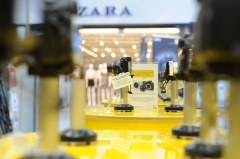
Nice review, can’t beat the rokinon’s for the price and they well made lenses.
.. looks similar with nikon lenses 😀 nice review!
Buna treaba ai facut, felicitari!
P.S. – daca ai putea face un revie si unui Sigma 85 f/1,4 pe un FX ar fi bestial!!
Excelent review, felicitari Marius!
Thanks all !
Here’s a link with some of the shots I took with this baby on my Nikon D3 ( almost all on 1.4 ) :
https://plus.google.com/photos/103164952044402035615/albums/5788482721974655985?banner=pwa